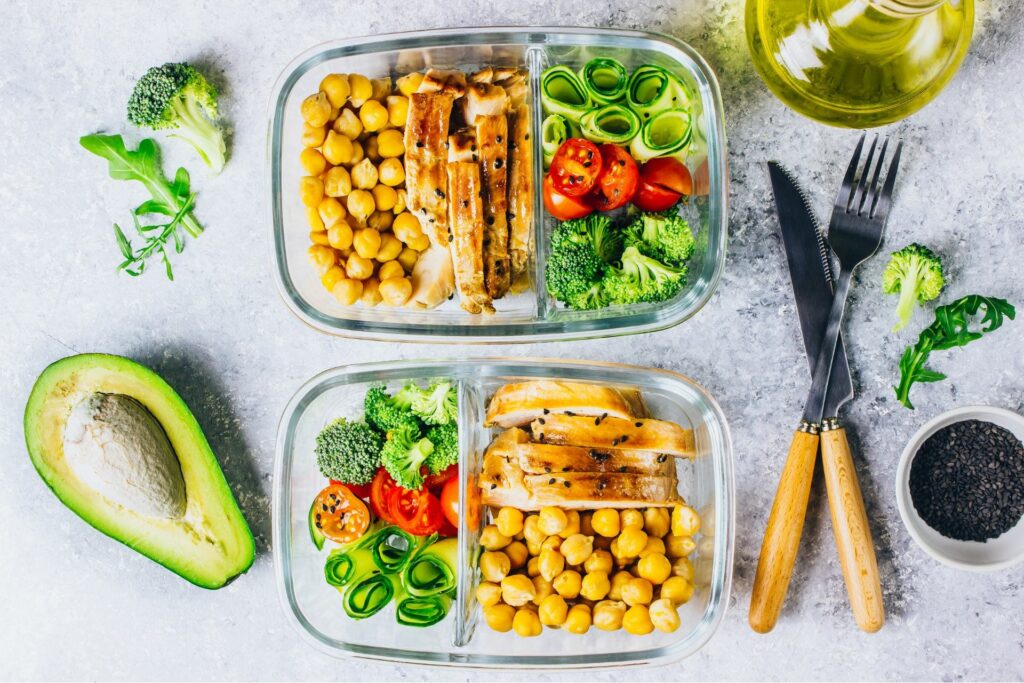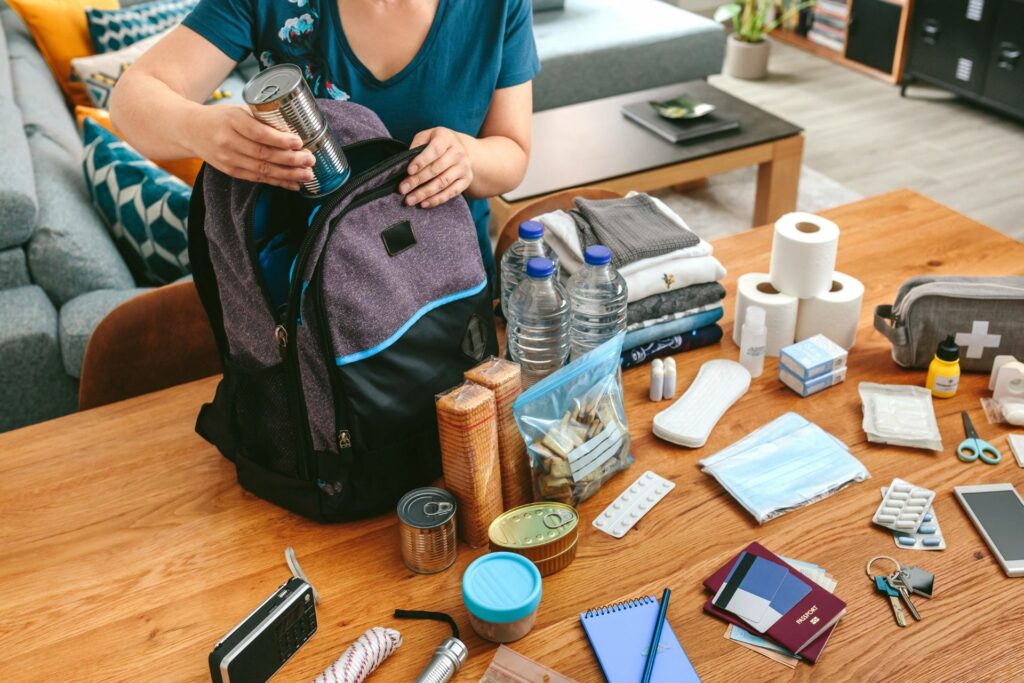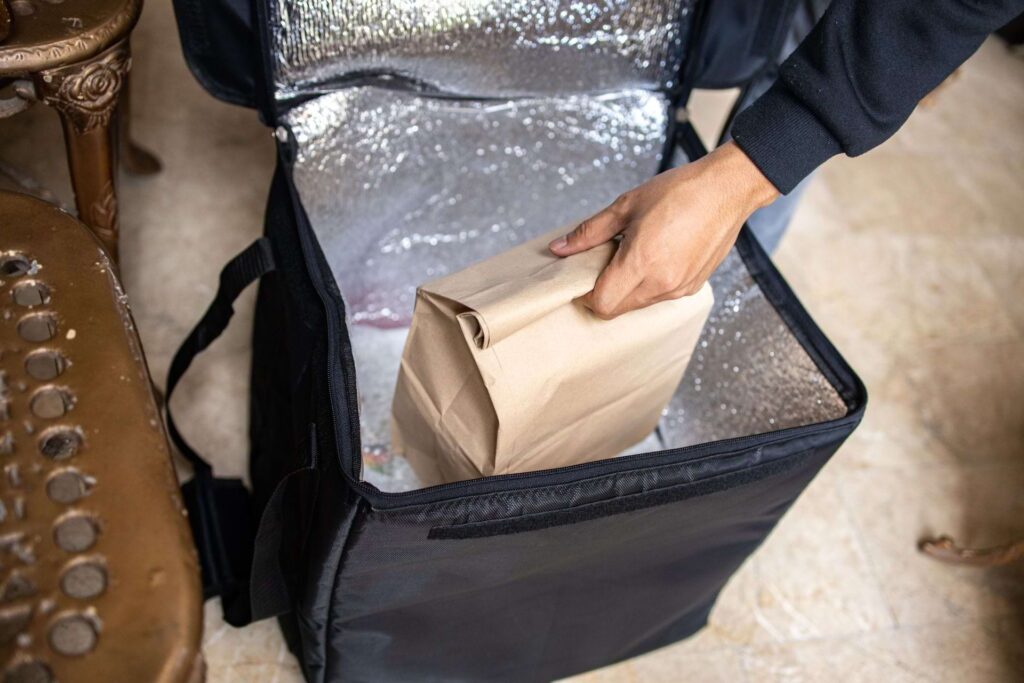Planning meals for backpacking can always be a little haphazard. Even experienced backpackers have found themselves hungry and out of food on the trail.
But walking trails hungry, fuel-deficient, and exhausted will ruin your entire trip. Who can appreciate the stunning views of a National Park on an empty stomach?
In this post, we’ll show you the best backpacking lunch ideas that require no cooking. That way, you can enjoy the great outdoors without worrying about packing a stove.
Planning on backpacking through the snow? Make sure you know the difference between crampons and microspikes before you invest in the wrong footwear.
Meal Prepping for Backpacking Trips

Planning your backpacking meals in advance for your trip is essential. You’ll need more calories and water to make up for the increased activity, so it’s important you take enough food to keep your energy levels up.
When you’re meal-prepping for backpacking trips, here are a few things to consider:
- How long is your trip?
- How much room do you have for food and water in your pack?
- How are you going to eat? Can you bring a backpacking stove, or will you eat on the go?
- Are you able to bring a cooler?
- What tools and utensils will you need?
Backpacking Breakfast Ideas
Aim to have around 600-700 calories for your breakfast to give you enough energy to start your day.
Breakfasts should be light but nutrient-rich, so you don’t feel weighed down or sluggish when you begin your day of backpacking.
Many hikers make the mistake of frontloading calories, but it’s better to have a smaller breakfast and then have snacks throughout the day. Here are some breakfast options:
- Energy bars
- Mixed nuts
- Granola
- Coffee or tea
Backpacking Lunch Ideas
Aim for a larger lunch of around 1200-1400 calories. You’ll be burning calories more quickly after a morning of backpacking, so it’s important to refuel and give your body the energy it needs to make it through the rest of the day.
Focus on high protein, nutrient-dense dinners, which could be a steady stream of snacks rather than a cooked meal. Some options are:
- Beef jerky
- Energy bars
- Nuts
- Protein shakes
Backpacking Dinner Ideas
For your final ‘meal’ of the day, you should have around 700-900 calories to go. This is where you can focus on carbs to help your body heal and store energy for the next day of hiking.
There’s nothing worse than having to cook after a long day of hiking, so freeze-dried backpacking meals are a great no-cook alternative. Some other options are:
- Freeze-dried fruit
- Sandwiches
- Couscous
- Crackers
Things to Consider When Planning Backpacking Food

It’s really up to you what you choose to eat when you go backpacking, but here are a few tips everyone should follow.
Use Odor-Proof Backpacking Food Storage
Whether you’re in bear country or a national park, you don’t want to give any wildlife an excuse to come sniffing around your camp. Mice, bears, coyotes, and other animals will smell open containers from miles away and chew through your tent to get to it.
Odor-proof bags make it easy to stash away food and hide the scent from unwanted guests, but you can also get bear canisters for something a little more secure.
Don’t Forget About Water
When you’re thinking about backpacking lunch ideas, don’t forget to factor in water consumption. Calories are important, but hydration is equally as essential, especially at higher elevations.
Elevation, physical exertion, and your weight will all determine how much water you need each day to stay properly hydrated – so plan this in advance along with your backpacking meals.
Leave No Trace
If you have any food wrappers, bags, or food waste, store it all in odor-proof bags and take it with you when you leave. Most backpackers know the importance of leaving no trace, but there are a few who spoil it for everyone.
Keeping trails clean and wildlife safe is a core part of backpacking, so ensure you do your part.
How to Keep Food Cold on Your Trip

The reality is you won’t be able to keep your food frozen on hikes, especially if you’re going for more than a day. If you’re happy to carry a cooler, this can keep food fresh for longer, but it’s not always possible when backpacking.
If you really need to keep food cool all day, here are a couple of practical tips.
Freeze Everything Beforehand
Rather than storing everything in your fridge before you go backpacking, freeze as much of it as you can. This way, it will thaw in your bag as you hike and stay cooler for longer.
Frozen items also act as ice packs, which will help keep the rest of your items cooler in your bag.
Remember – frozen items are also heavier, so keep this in mind when packing your bag.
Eat Fresh Food First
Most backpackers bring a mix of fresh food and non-perishables for trips. Since your fresh food won’t last as long, each this first. Everything will be cooler and fresher at the beginning of the trip, so it will be nicer to eat.
Non-perishables will last the entire trip, so snack on these toward the end of your hike.
Where to Buy Backpacking Food
Most supermarkets have everything you need for a backpacking trip, from dried fruit to energy bars. However, if you’re looking for freeze-dried meals, there are tons of great stores online to stock up:
These places also have some great protein bars, powders, and other snacks that are great for backpacking without cooking.
What You Need to Eat on a Backpacking Trip
Getting the right amount of food daily is essential when you’re on the trail. By organizing your camping food in advance, you won’t have to worry about going hungry or not getting enough calories to get you through the day.
If you’re hiking miles away from town, pack at least an extra day’s worth of food for emergencies. If you get stranded, you’ll have enough to keep you going until help arrives.
Opt for mostly non-perishable foods that are nutrient-dense and easy to snack on throughout the day, such as:
- Trail mix
- Nuts and seeds
- Dried or freeze-dried fruits and veggies
- Energy bars or gels
- Granola
- Peanut butter and nut nutter
- Dried jerky
How Much Food Should You Pack For Backpacking?
If you’re planning to go backpacking for days at a time, it can be a little more tricky to plan your meals in advance. Figure out how many calories you need in a day, and don’t forget to account for the raised activity levels of hiking, climbing, or kayaking.
Some easy, no-cook basics you can take for your meals include:
- Cereal
- Poultry or fish pouches
- Canned tuna, poultry, or meat
- Whole-grain pasta, couscous, and rice mix
- Ramen noodles
- Pancake mix, dried soups, and dehydrated meals
- Marshmallows
- Powdered shakes and camping meal replacements
- Freeze-dried vegan meals
- Bottled water
Best Backpacking Lunches – No Cooking Required

When it comes to backpacking lunches, you don’t have to live on energy bars to avoid cooking. Here are some calorie-dense options for your next trip.
Cheese, Crackers, And Salami
All three of these items are non-perishable snacks that quickly and easily become a charcuterie for you to enjoy for lunch. Eat them separately or stack them together for a quick lunch on the go.
Beef Jerky
Beef jerky is high in protein and doesn’t take up much room in a backpack. It’s a great snack for backpacking and easy to grab at lunchtime when you need to refuel.
Sandwiches
Sandwiches are easy to prepare in advance and can be stored in plastic baggies ready for lunchtime. Wrap them in aluminum foil to help them stay fresh, and include some meat for a hit of protein.
Chia Pudding
Chia seeds are lightweight, high in protein, and nutrient-dense. All you need to do is add milk and let it soak to create a pudding. Prepare it in advance with some cacao powder for chocolate pudding for lunch!
Couscous
Cold soaking couscous is another healthy, calorie-packed lunch. We like to prepare ours in advance with some chopped-up veggies for a quick lunch on shorter hikes.
Overnight Oats
These are easy to prepare ahead of time – just soak them overnight in some milk to create a healthy, carb-packed lunch for your backpacking trip. Add some nuts or fruit to taste, and you’re ready to go.
Burritos
Burritos are perfect for any backpacking meal and can be prepared in advance to avoid cooking on your camping trip. They’re also freezable, so easy to keep cool all day long.
Dried Fruit
This is a lightweight, easy-to-store snack for backpacking. Packed with nutrients, you can snack on dried fruit all day for a hit of energy without any prep required.
Pre-Made Salads
Quinia salad is a high-protein option you can easily prepare in advance for your first day of hiking. No cooking is required, and it’s easy to store in a baggie or container.
Meal Bars
What’s easier than grab-and-go meal bars? These come in every flavor imaginable and give you the energy you need to make it through a day of hiking or climbing.
Bagels
Just like sandwiches, these are quick to prepare ahead of time and can be customized to your taste with any filling you like.
Granola
This is probably one of the best backpacking lunch ideas that require no cooking. Eat it dry as a quick snack, or bring some powdered milk and dried fruit to turn it into a nutritious meal for lunch.
Protein Shakes
If you’re in need of an energy boost midway through a hike, a protein shake is a great option. They come in every flavor you can think of and are easy to drink on the go. Just don’t forget to have some real food along with these meal supplements!
Looking for a Great Place to Go Backpacking?
With a little planning, it’s easy to come up with backpacking lunch ideas that are nutritious, easy to prepare, and require zero cooking out on the trail.
And speaking of trails… if you’re looking for a great place to go backpacking, you must try Big Pine Lakes.
It’s one of our favorite backpacking spots in the entire US, and we’ll show you why in our Big Pine Lakes Hiking Guide.

